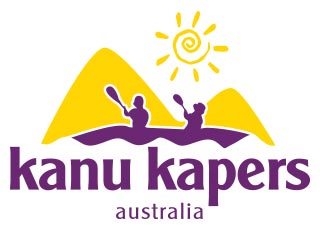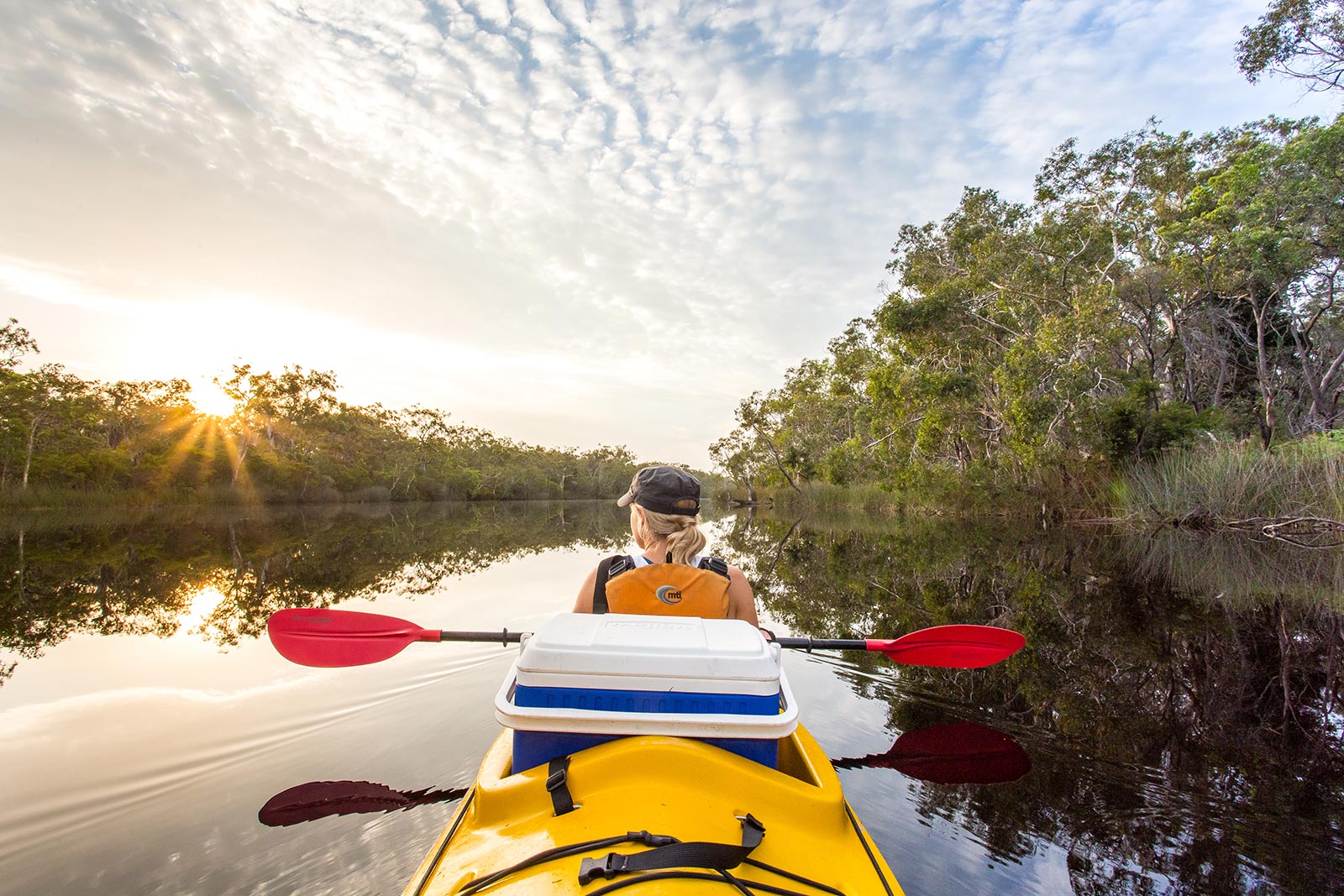Spring is just around the corner and there’s no better place to feel the arrival of new life than paddling under your own steam, immersed in the sublime tranquillity of the pristine Noosa Everglades, gateway to the Great Sandy National Park and Fraser Island. Fresh new shoots adorn the trees and the lush banks of the Upper Noosa River are set to burst with brilliant color as one by one the stunning wildflowers open. Add in to the fold the arrival of the majestic jabiru, scores of black swans, pelicans and the occasional kingfisher and it’s easy to be bowled over by the Noosa Everglades and its’ enchanting River of Mirrors. Here you can really feel at one with nature as did the Kabi Aboriginal Tribe who once graced this special land.
Because of its great diversity of landscape, wildflowers are abundant in this the Cooloola section of the Great Sandy National Park. In fact with over 726 species of flowering plants and ferns, this corner of the park has a greater density of flora than any other part of coastal Queensland. Most abundant by far are the smaller (but no less impressive) wildflowers such as iris, lilies and orchids; of which there are many varieties. These include the deep purple Bush Iris, the sweetly scented Vanilla Lily and Pinkies Orchid and the striking pink Hyacinth Orchid, to name a few. Turning the corner from Lake Cootharaba in to Fig Tree Lake you are rewarded with the breathtaking view of thousands of water lilies turned upward towards the sun. Pelicans abound and the aroma of the lilies is simply intoxicating.
The meandering Upper Noosa River snakes through expansive plains of tea tree and wildflowers towards the brilliantly colored sand cliffs of Rainbow Beach. Leached of most impurities, the waters of the Everglades have some of the purest, freshest water to be found anywhere. It’s not hard to see why the region attracts such diversity of flora and fauna and why the Kabi Tribe chose to make it their home.
Kayaking is a great way to experience bird life as birds are attracted to waterways for many reasons. Being so quiet, you have the opportunity to get up close and experience such delights as the kingfisher with its’ flash of brilliance darting and diving through the air and the graceful black swans as they huddle together in the native long grasses. Australia’s only stalk, the jabiru, has been spotted recently fishing along the shallow banks of Lake Cootharaba. At over 1.3m tall, mainly thanks to its long legs, its wing-span is over two meters. To see it in flight is truly spectacular.
Vivienne Golding, former Australian Kayak Champion and MD of Kanu Kapers who run sustainable kayak tours in The Everglades described her most recent encounter,
‘I was out kayaking with a group last week and we saw a jabiru take off from the edge of the lake just ahead of us. Its’ enormous wings blocked out the sun for a fraction of a second! It’s such an impressive sight which we probably would not have been privileged to see so close up had we been traveling by any means other than the kayaks. The jabiru is very sensitive to human impact such as changes in water levels and the destruction of aquatic vegetation, so the fact that it keeps returning to The Everglades is a good sign that the waterways are very healthy’.
Kanu Kapers’ offer guided and self-guided tours to the Noosa Everglades using top of the range sea kayaks. All tours include a visit to the charming old Apollonian Pub in the village of Boreen Point. Kanu Kapers’ aim is for people of all ages to experience the real tranquility of The Noosa Everglades and to leave no trace. The Noosa Everglades are just 20 minutes from Noosa.

